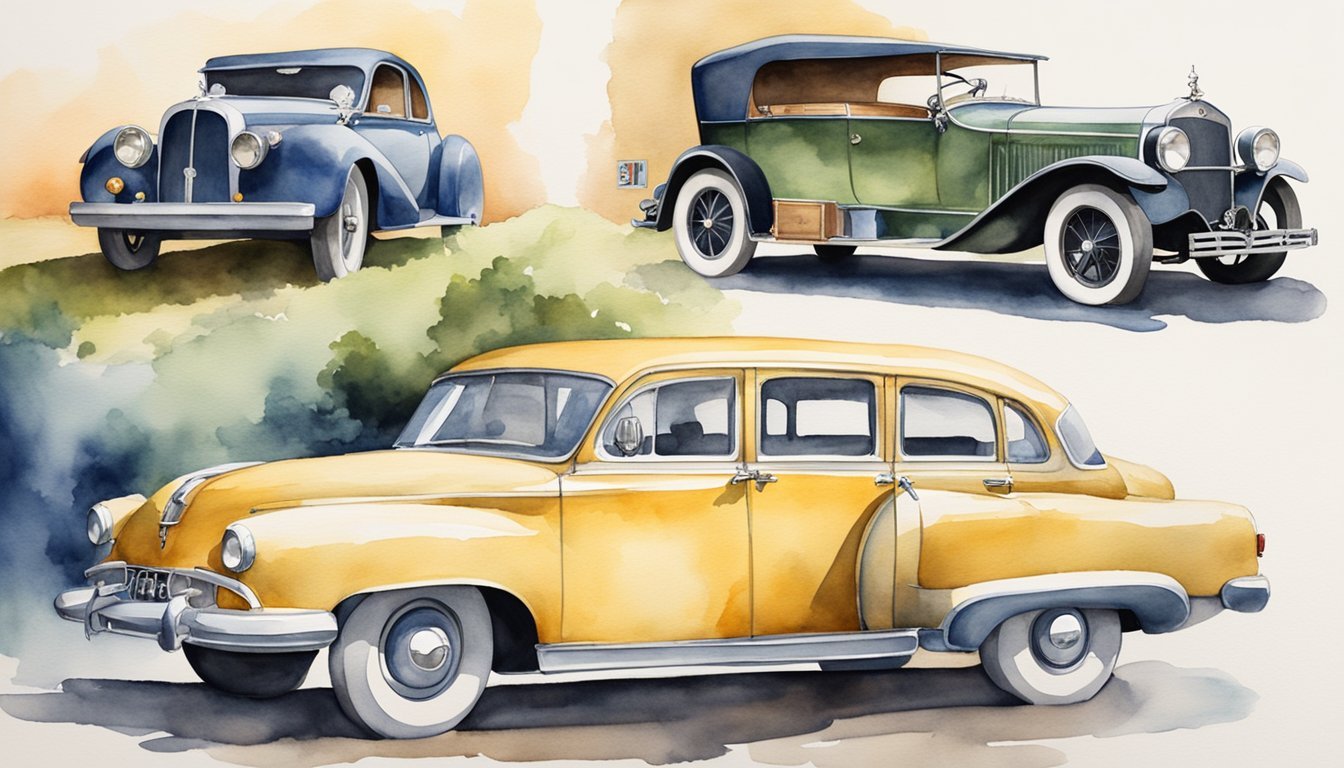Origins of the Automobile
Inception and Early Inventors
The history of the automobile dates back to the 19th century when various inventors around the world began creating vehicles powered by steam, electricity, or internal combustion engines.
One of the earliest known vehicles was constructed by Nicolas-Joseph Cugnot, a French inventor who developed a steam-powered fardier à vapeur (steam carriage) in 1769.
Although this invention was steam-powered, it laid a foundation for future developments in the industry.
The 1880s marked a turning point in the history of automobiles, following the invention of the internal combustion engine by various inventors.
German mechanical engineer Karl Benz designed and built the first practical automobile powered by an internal combustion engine in 1885.
He received the first patent for a gasoline-fueled car on January 29, 1886.
His vehicle, which he called the Motorwagen, was a three-wheeled wagon that used gasoline.
Benz went on to build his first four-wheeled car in 1891.
Major Contributions and Developments
Two prominent engineers, Gottlieb Daimler and Wilhelm Maybach, played critical roles in the further development of automobiles.
Daimler and Maybach were instrumental in creating the first four-stroke internal-combustion engine, which would later become the foundation for gasoline-powered engines.
Around 1885, Daimler invented a prototype of the modern gasoline internal combustion engine using a vertical cylinder, known as the “grandfather clock engine.”
In 1901, Daimler and Maybach launched the first Mercedes car, which revolutionized automotive design with its lightweight construction and remarkable speed.
This vehicle marked the beginning of the Mercedes-Benz brand, which is still synonymous with luxury and innovation today.
Other key figures in the history of the automobile include Siegfried Marcus, an Austrian inventor who reportedly built a gasoline-powered vehicle in the late 1860s, and Henry Ford, an American industrialist who mass-produced the Model T. Ford’s assembly line technique transformed the automobile industry, making cars more accessible and affordable for average people.
The car industry has seen various evolutions throughout its history, from steam-powered engines to gasoline and diesel engines, and eventually electric cars.
As technology advances, we continue to witness groundbreaking innovations in the automobile sector.
Times may change, but the fascinating history and achievements of early inventors like Karl Benz, Wilhelm Maybach, and Gottlieb Daimler will forever remain a significant part of our modern world.
Evolution and Impact of the Car

Spread of Automobile Use Worldwide
The invention of the automobile can be traced back to the late 1800s, with the credit often being given to Karl Friedrich Benz for creating the first gasoline-powered car.
It was initially meant to replace horse-drawn carriages and provide more convenient means of transportation.
As the automobile industry grew, it began to spread across the globe.
In the United States, Henry Ford developed the moving assembly line, significantly increasing the production and accessibility of cars.
The popularity of automobiles continued to grow, and by the early 20th century, they had become a staple in many countries, including the United States, Germany, and France.
The growth of the automobile industry had a profound impact on infrastructure development, leading to better roads, highways, and bridges.
Technological Advancements and Variations
Throughout history, numerous technological advancements have contributed to the evolution of cars.
Early internal combustion engines were powered by a variety of fuels, such as coal gas, hydrogen, and kerosene.
One notable invention was the two-stroke engine by Samuel Brown.
In 1886, German inventors Gottlieb Daimler and Wilhelm Maybach founded the “Daimler Motoren Gesellschaft” (DMG), which later became Mercedes-Benz.
They not only contributed to the advancement of engine technology but also focused on making cars lightweight and more efficient.
Further advancements in technology, such as the development of the diesel and electric engines, expanded the types of vehicles available, including trucks and buses, significantly impacting transportation worldwide.
As automobiles continued to evolve, they became symbols of status, luxury, and convenience.
Over time, cars have been designed for various purposes, from family sedans and convertibles to sports cars and eco-friendly electric vehicles.
This variety in design and function has allowed automobiles to play a pivotal role in shaping the world’s transportation systems, economy, and social dynamics.




